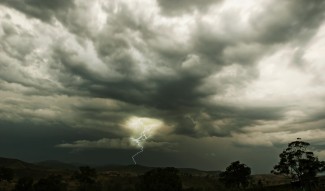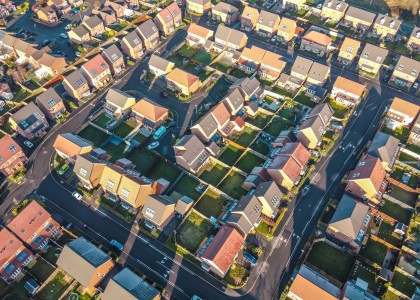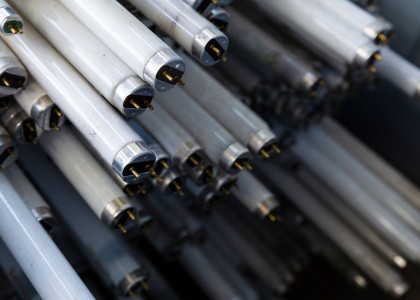Before the COVID-19 crisis, one-third of American households faced difficulty affording their energy bills, some having to choose among key necessities such as food, medicine, and keeping the lights on. Now as they shelter in place and many lose their jobs and sources of income, we expect household energy costs to rise, adding another stressor to the current economic crisis.
Our pre-COVID research found that about 30 million U.S. households experience high energy burdens. A household’s energy burden is the percentage of income spent on energy bills, and academics consider spending more than 6% of income on energy a high or unaffordable burden. High energy burdens hit low-income households particularly hard, and these burdens are associated with increased stress, negative health impacts, and cycles of poverty. Those with disproportionally high burdens include African American and Hispanic households, renters, older Americans, and those residing in affordable multifamily buildings.
These highly burdened communities are also the most affected by COVID-19, which research has found disproportionally impacts communities of color, especially black communities. Researchers found that pre-existing conditions related to air pollution increase the risk of a COVID-19 death, and black communities are disproportionally impacted by polluting facilities. Therefore, some of those most impacted by COVID-19 may have already been struggling to pay energy bills, which may now become even more difficult to afford.
Incomes decrease as energy costs increase
It’s a perfect storm: Incomes are falling, and energy costs are rising. Already, 36 million Americans have applied for unemployment, more than half due to the pandemic. This impact hits as many people spend more time at home and their home energy and water bills increase.
In California, residential electric usage has increased 15–20% in recent weeks compared to the same period in 2019. As we move into the summer, electric bills will also rise for many because of the need for more air conditioning. The threat of extreme heat waves may create additional spikes in electric bills this summer.
Many states and utilities have suspended disconnections due to unpaid energy bills to ensure everyone has energy during the crisis. Some—but not all—have waived late fees. While shut-off moratoria keep the lights on in the short term, most states allow for energy bills to continue to accrue and don’t have plans in place to address growing customer debt. Bill assistance programs, including the Low-Income Home Energy Assistance Program (LIHEAP), help. But the programs don’t reach all who qualify, leaving millions of highly burdened households without support.
Long-term solutions to reduce energy bills should include efficiency
High energy bills for low-income families aren’t inevitable. They’re often the result of inadequate insulation, inefficient heating and cooling equipment, old appliances, and a host of other factors. In addition to short-term direct bill assistance, improving home efficiency through weatherization can reduce bills for highly burdened households. Homes improved by the federal Weatherization Assistance Program, for instance, save their occupants about $300 per year on energy bills and provide significant health benefits.
Energy efficiency investment is needed to reduce bills in the long term—including to mitigate economic pain in a potentially prolonged crisis.
Efficiency work delayed, and future work targeted
Unfortunately, COVID-19 has slowed or halted energy efficiency programs in many states, especially the programs serving low-income households that require contractors to enter homes to install weatherization measures. While this pause is necessary to maintain social distancing and protect the public health, it costs jobs, foregoes energy savings, and poses challenges to rebuilding capacity later.
Although energy efficiency work needs to resume when health conditions allow, some states are facing efforts to shift funds from energy efficiency to address COVID-19 needs. Consumer advocates broadly agree that utility customers should have access to weatherization and energy efficiency services alongside other needed protections, as stated in a new resolution by the National Association of State Utility Consumer Advocates.
Cutting back on investments that reduce future energy bills is shortsighted and unwise. Instead, we need to increase investments in both bill payment assistance and energy efficiency.
Strategies to sustain low-income energy efficiency programs
Low-income energy efficiency programs—funded largely through utility ratepayer dollars and the federal government—can prepare now for the challenges they will face when they restart and operate in the COVID-19 landscape.
Provide support now
Many utilities and implementers have started implementing virtual audits, which allow an energy professional to “walk through” a home over the phone or via the internet to identify potential energy saving measures. Some, such as Energy Outreach Colorado and DTE Energy, have also continued to operate programs that provide emergency heating system replacements when social distancing options are available. While these limited programs cannot replace the benefits of full weatherization, they give program implementers a way to continue supporting customers and contractors now.
While waiting to restart weatherization services, some implementers have switched to delivering energy-saving kits to customers. For example, Eversource Connecticut is sending a self-installation package—including education material, LED bulbs, and advanced power strips—to all customers participating in their virtual pre-assessment home walkthrough. Similarly, TVA has mailed customers its EnergyRight Energy Monsters kit, which provides energy-saving programming and activities for children and energy-saving tips for parents. Other program implementers are offering direct communication and support over the phone, where they provide information on saving energy and direct customers to additional resources.
Prepare for new health and safety needs
Many low-income program implementers are preparing to restart or have restarted program operations with additional personal protective equipment (PPE) and new health and safety strategies. The National Association for State Community Service Programs created a list of PPE suggestions for weatherization workers, including basic infection-prevention measures, changes in how crews operate, and health screening questions before home visits. Following Colorado’s Weatherization Assistance Program COVID-19 protocols, Energy Outreach Colorado recently restarted weatherization work in homes. These guidelines include new training and education on signs and symptoms of COVID-19, monitoring staff members for illness, screening clients for risk factors, and including new social distancing for workspaces and PPE requirements for job sites.
Create a pipeline of future participants
Virtual energy assessments create a pipeline of future program participants, which can help avoid lags once programs are able to restart. For example, JEA compiled a list of income-eligible customers with high energy use to reach out to with support during the Florida stay at home order. It offered virtual energy audits and signed customers up to be re-called for a future in-person appointment once safe to do so.
As COVID-19 leads to higher household energy burdens, energy efficiency continues to be a critical strategy to help households reduce their energy bills and improve long-term comfort and affordability. Low-income program implementers can adopt these strategies to sustain their programs in the short and long term as they prepare to continue work in an uncertain future.



